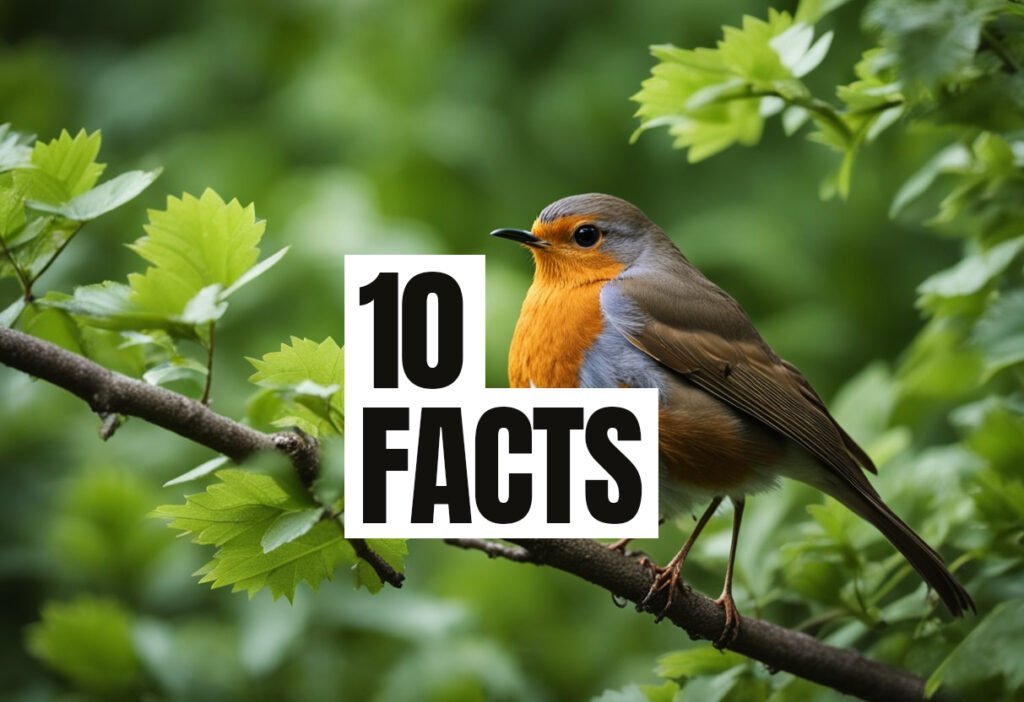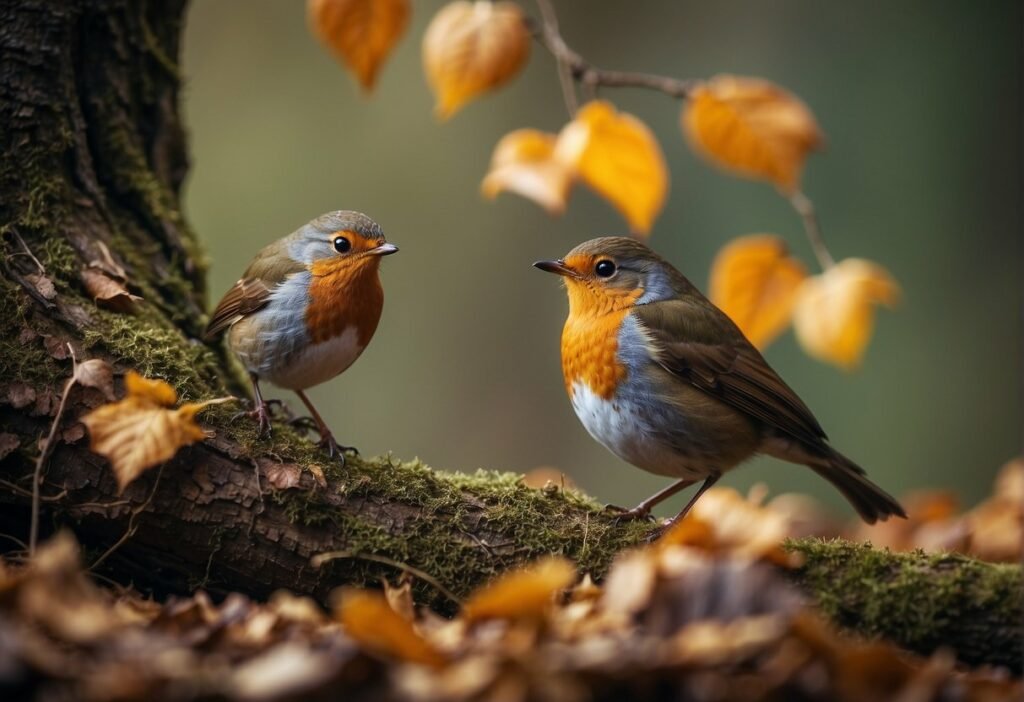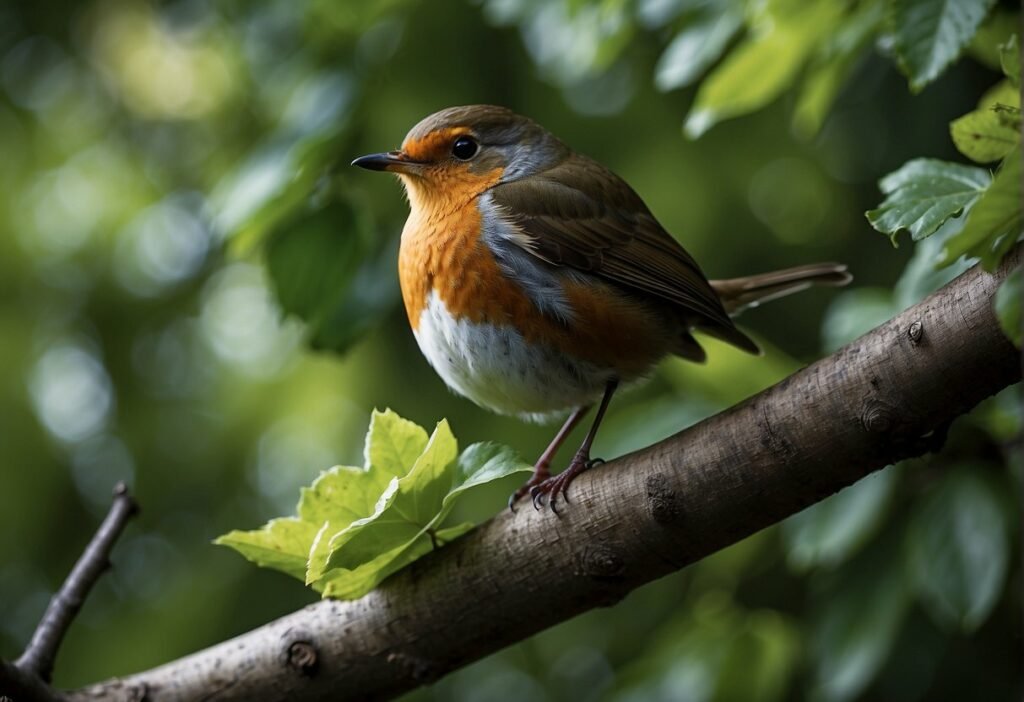
Are you eager to start your bird-watching journey but don’t know where to begin? Look no further! This guide focuses on one of the most beloved backyard birds – the robin. Whether you’re in North America admiring the American Robin or in Europe observing the European Robin, these 10 essential tips will help you become an expert robin spotter in no time. Let’s dive into the fascinating world of these charming birds and discover how you can enhance your robin-watching experience.
1. Know Your Robin: Identification Basics
Before you embark on your robin-spotting adventure, it’s crucial to familiarize yourself with the appearance of these delightful birds. American and European Robins have some distinct differences, but both species share some common features:
- Rounded body shape
- Distinctive red or orange breast
- Melodious song
American Robins are larger, with gray-brown backs and black heads, while European Robins are smaller with brown backs and a red face patch. Telling male and female robins apart can be tricky, as they often look quite similar. However, males typically have brighter plumage, especially during breeding season.
2. Understand Robin Habitats
Knowing where to look for robins is half the battle. These adaptable birds can thrive in various environments, from urban gardens to rural woodlands. They prefer areas with:
- Open grassy areas for foraging
- Trees or shrubs for nesting and shelter
- Available water sources
Keep in mind that robin populations may shift with the seasons, as some robins migrate while others are year-round residents. Understanding these patterns will help you know when and where to look for these feathered friends.
3. Learn Robin Behaviors
Observing robin behaviors can greatly enhance your bird-watching experience. Some key behaviors to watch for include:
- Feeding habits: Robins are ground feeders, often seen hopping across lawns in search of worms and insects.
- Nesting: Robins build cup-shaped nests, often in trees or on man-made structures. They may return to the same nesting sites year after year.
- Singing: Male robins are known for their beautiful songs, especially during breeding season. Interestingly, robins sometimes sing at night, particularly in urban areas with artificial lighting.
4. Choose the Right Time of Day
Timing is crucial when it comes to robin spotting. These birds are most active during:
- Early morning: Robins are early risers, often among the first birds to start singing at dawn.
- Late afternoon: Many robins become active again as the day cools down.
Remember that seasonal changes can impact robin feeding habits, so adjust your observation times accordingly throughout the year.
5. Use Proper Equipment
While robins are relatively easy to spot, having the right equipment can enhance your bird-watching experience:
- Binoculars: A good pair of binoculars is essential for observing details from a distance.
- Field guide or mobile app: These can help you identify different robin species and behaviors.
- Notebook or journal: Record your observations to track patterns and improve your skills over time.
6. Create a Robin-Friendly Backyard
One of the best ways to observe robins is to attract them to your own backyard. Here are some tips for creating a robin-friendly environment:
- Plant native berry-producing shrubs and trees
- Maintain a water source, such as a birdbath
- Provide open lawn areas for foraging
- Avoid using pesticides that may harm robins or their food sources
Creating a Robin-Friendly Backyard
🌳 Native Plants
Plant native trees and shrubs that produce berries. Robins love:
- Serviceberry
- Dogwood
- Holly
- Winterberry
💧 Water Sources
Provide shallow water sources for drinking and bathing:
- Bird baths (1-2 inches deep)
- Shallow fountains
- Dripping water features
🏡 Nesting Sites
Create suitable nesting locations:
- Open-fronted nest boxes
- Horizontal branches in trees
- Vine-covered walls
🐛 Natural Lawn Care
Maintain a healthy lawn for foraging:
- Avoid pesticides
- Leave some leaves in fall
- Allow areas of longer grass
7. Practice Robin Calls and Songs
Learning to recognize robin vocalizations can significantly improve your spotting skills. Robins have a variety of calls and songs, including:
- Cheerily, cheer up, cheer up, cheerily, cheer up (typical song)
- Tut-tut-tut (alarm call)
- Seep seep (contact call)
Practice listening to recordings of these sounds, but remember to use playback sparingly in the field to avoid disturbing the birds.
8. Join Local Birding Groups
Connecting with other bird enthusiasts can enhance your robin-watching experience. Consider:
- Joining a local Audubon Society chapter
- Participating in community bird walks
- Contributing to citizen science projects like the Christmas Bird Count
These activities not only improve your skills but also contribute to important robin population research.
9. Develop Proper Field Etiquette
Responsible bird watching is crucial for the well-being of robins and their habitats:
- Maintain a respectful distance from birds and nests
- Avoid using flash photography, which can stress the birds
- Stay on designated paths to protect habitats
- Follow local guidelines and regulations
Remember, robins play a crucial role in their ecosystems, so it’s important to observe them without causing disturbance.
10. Keep Learning and Improving
The world of robin watching is vast and fascinating. To continue improving your skills:
- Read books and online resources about robins and bird watching
- Attend workshops or webinars on bird identification and behavior
- Explore more advanced topics like robin migration patterns or the symbolism of robins in different cultures
Did you know that robins have been featured on rare stamp collections? This shows just how beloved these birds are in popular culture!
Conclusion
Armed with these 10 essential tips, you’re now ready to embark on your robin spotting adventure. Remember, patience and practice are key to becoming a skilled bird watcher. As you hone your robin spotting skills, you’ll develop a deeper appreciation for these charming birds and the natural world around you.
From understanding the fascinating lifecycle of robins to learning about how robins adapt to urban environments, there’s always something new to discover about these delightful birds. So grab your binoculars, head outdoors, and start your robin-watching journey today. Happy birding!






